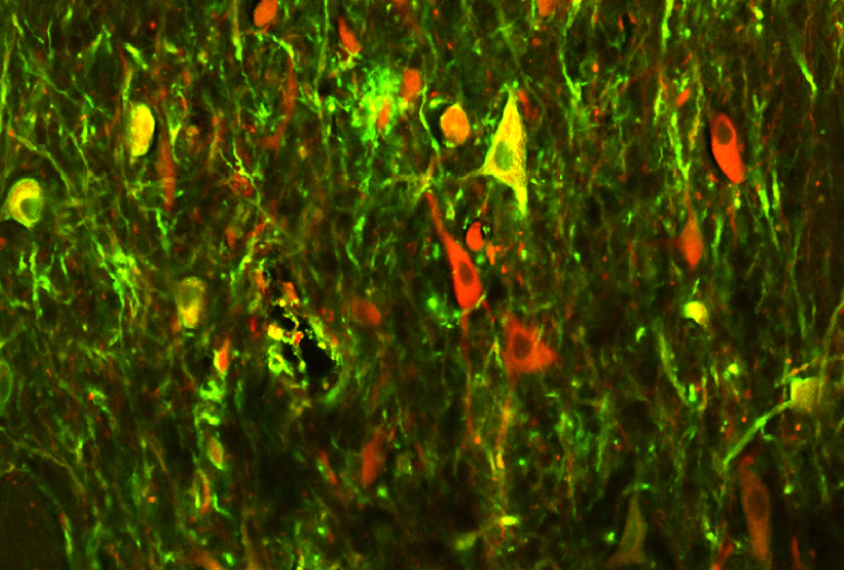
Pitt Health Sciences / Cell
THIS ARTICLE IS MORE THAN FIVE YEARS OLD
This article is more than five years old. Autism research — and science in general — is constantly evolving, so older articles may contain information or theories that have been reevaluated since their original publication date.
A new method uses flashes of light to stimulate specific sets of neurons in monkey brains. Researchers used the technique to control brain circuits involved in reward1.
The method involves optogenetics, in which scientists engineer select neurons to carry a light-sensitive protein called opsin. Shining light on the cells then activates them. Monkeys are more difficult than mice to manipulate in this way, however.
In the new study, published 8 September in Cell, researchers used two viruses to make neurons in the brains of rhesus macaques responsive to light. One virus carries the gene for opsin, modified so it functions only in the presence of an enzyme called Cre recombinase. The second virus carries the gene for Cre recombinase.
A piece of DNA guides the second virus to a specific set of neurons — in this case, those that use the chemical messenger dopamine, which has been implicated in autism. Once both viruses infect the neurons, the neurons manufacture opsin, making them responsive to light.
The researchers injected the viruses into the brains of four monkeys. They targeted dopamine neurons in a region called the ventral tegmental area (VTA) that fire when the monkey receives a reward. Eight weeks after the injections, more than half the targeted neurons expressed the opsin protein. When the researchers used a small probe to shine blue light on the region, the infected neurons became active.
The researchers then tried to alter the monkeys’ decisions using the technique. They gave the monkeys a choice between two pictures. Choosing one of the pictures led to a reward of black currant juice; choosing the other picture yielded the same juice along with light pulses directed at the VTA.
The animals quickly learned to choose the picture that led to the light as well as the juice, indicating that the light was stimulating the reward cells.
Researchers could use the approach to target other types of neurons by altering the DNA fragment that guides the virus to specific cells.
By joining the discussion, you agree to our privacy policy.